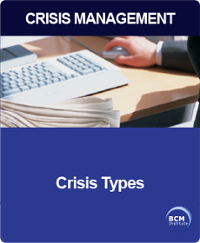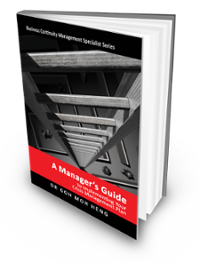Crisis Scenario:
Organisational Misdeed: Deception
 Crises of organisational misdeeds arise when management makes certain decisions, knowing the harmful consequences.
Crises of organisational misdeeds arise when management makes certain decisions, knowing the harmful consequences.
In such cases, superiors overlook the long-term consequences of strategies and implement them for immediate results. This will adversely affect the stakeholders and external parties (or interested parties).
Examples of organisational misdeeds can be further classified into the following three types. They are: Skewed Management Values
Deception and Management Misconduct.
Management Misconduct
Organisations face the crisis of management misconduct when management indulges in deliberate acts of illegality. For example:
- Accepting bribes
- Leaking or passing on confidential information
Introduction
 Crisis scenarios arising from Management Misconduct represent a critical threat to an organisation's integrity, sustainability, and stakeholder trust.
Crisis scenarios arising from Management Misconduct represent a critical threat to an organisation's integrity, sustainability, and stakeholder trust.
Unlike external shocks or operational failures, these crises originate from within the leadership structure, often involving deliberate violations of ethics, governance, or accountability.
When misconduct by managers or executives is exposed, the impact reverberates throughout the organisation, leading to scrutiny from regulators, erosion of internal morale, and damage to the organisation’s public image.
The table below outlines common examples of management misconduct that can trigger a crisis, helping organisations recognise red flags and reinforce preventive mechanisms such as compliance programs, whistleblower protections, and ethical training.
Definition: Management Misconduct
Organisational Misdeeds – Management Misconduct refers to unethical, illegal, or irresponsible actions carried out by individuals in leadership or managerial positions within an organisation.
These actions often involve abuse of authority, violation of legal or regulatory obligations, exploitation of resources, or behaviour that contradicts the values and codes of conduct expected from management.
Such misconduct can lead to reputational damage, regulatory penalties, employee disengagement, and long-term financial and operational consequences.
Example of Crisis Scenario: Management Misconduct
The table below shows a list of examples for a crisis scenario: Organisational Misdeeds – Management Misconduct, which refers to unethical, illegal, or inappropriate actions committed by individuals in leadership positions, often resulting in reputational, legal, or operational damage to the organisation.
| No. | Example | Description |
|---|---|---|
| 1 | Sexual Harassment by Senior Executives | A top executive is accused of inappropriate behaviour, triggering legal action, media backlash, and internal unrest. |
| 2 | Insider Trading | Senior management uses confidential corporate information for personal gain in the stock market. |
| 3 | Bribery and Corruption | Executives are found offering or accepting bribes to secure deals, evade regulations, or win government tenders. |
| 4 | Retaliation Against Whistleblowers | A whistleblower reports unethical behaviour and is subsequently demoted, harassed, or terminated by leadership. |
| 5 | Abuse of Power or Position | Executives misuse their authority for personal gain, favouritism, or punishing dissenting employees. |
| 6 | Fraudulent Reimbursement Claims | A senior manager submits fake or exaggerated claims for travel, entertainment, or project expenses. |
| 7 | Personal Use of Company Assets | Management uses company property (cars, credit cards, facilities) for private purposes without authorisation. |
| 8 | Conflict of Interest in Deal-Making | A senior leader steers contracts to companies where they or family members have financial interests. |
| 9 | Nepotism and Cronyism | Leadership hires or promotes unqualified friends or family members into key roles, undermining meritocracy. |
| 10 | Substance Abuse at Work | A high-ranking executive is caught using drugs or alcohol during working hours, impairing judgment and safety. |
| 11 | Harassment and Intimidation Culture | Management fosters a toxic workplace by belittling or bullying staff, often behind closed doors. |
| 12 | Unlawful Retrenchment or Demotion | Staff are laid off or demoted without a proper legal process or due justification, often to silence internal critics. |
| 13 | Manipulation of Internal Investigations | Senior leaders interfere with internal audits or investigations to hide their misconduct. |
| 14 | Leaking Confidential Information | Executives share proprietary or confidential data with competitors, media, or other third parties for leverage. |
| 15 | Extravagant and Unjustified Executive Bonuses | Executives award themselves large bonuses despite company underperformance or layoffs of staff. |
Conclusion
Preventing and managing crises related to Management Misconduct requires a strong governance framework, a culture of transparency, and robust internal controls.
Organisations must go beyond regulatory compliance to foster ethical leadership and empower employees to report misconduct without fear.
Timely detection and response to unethical behaviour at the top can mitigate reputational fallout, restore stakeholder confidence, and ensure long-term resilience.
By understanding the types of misconduct that can emerge, organisations are better equipped to design safeguards and uphold accountability at every level of leadership.
Reflection as a BCM and CM Practitioner
 As discussed in "What Crisis or Crisis Scenario Should I Be Planning For My Organisation?", you may wonder whether this type of crisis may not be part of your job scope. Click the right icon to read more
As discussed in "What Crisis or Crisis Scenario Should I Be Planning For My Organisation?", you may wonder whether this type of crisis may not be part of your job scope. Click the right icon to read more
The key in this discussion is to identify the kinds of crisis scenarios and to raise them with the relevant interested parties for responsible professionals who have recognised the potential for a crisis, so that they can implement a crisis response tailored to this specific scenario.
Find out more about Blended Learning, Crisis Management & Crisis Communication Certification Programs.
Contact our course consultant colleagues to learn more about our blended learning crisis management and crisis communication certification program, as well as when the next course is scheduled.
The crisis communication blended learning courses are the CM-3 Blended Learning CM-300 Crisis Management Implementer and the CM-5 Blended Learning CM-5000 Crisis Management Expert Implementer.
| Crisis Management CM-5 & CM-3 | ||
 |
 |
![[BL-CM] [5] Register](https://no-cache.hubspot.com/cta/default/3893111/82024308-16f4-4491-98be-818a882c6286.png) |
 |
 |
 |
| Crisis Communication CC-5 & CC-3 | ||
 |
||
![Register [BL-CC-3]*](https://no-cache.hubspot.com/cta/default/3893111/7ba2f5f9-19ae-4a0e-a599-a2653b8c0bb5.png) |
||
 |
Please feel free to send us a note if you have any of these questions to ![Email to Sales Team [BCM Institute]](https://no-cache.hubspot.com/cta/default/3893111/3c53daeb-2836-4843-b0e0-645baee2ab9e.png) |
 |
Do You Want BCM Institute to conduct training courses funded by the Singaporean and Malaysian governments to implement or update your BC or CM plans?
Reference Guide
 Goh, M. H. (2016). A Manager’s Guide to Implement Your Crisis Management Plan. Business Continuity Management Specialist Series (1st ed., p. 192). Singapore: GMH Pte Ltd.
Goh, M. H. (2016). A Manager’s Guide to Implement Your Crisis Management Plan. Business Continuity Management Specialist Series (1st ed., p. 192). Singapore: GMH Pte Ltd.
Note: This version is the draft 2nd Edition being updated in 2024. The numbers in the square brackets {C##] and [AX-#] are the cross-referencing of the actual chapter and appendices in the 2016 Edition.





![[BL-3-Catalog] What Specialist Level Blended Learning Courses that are Available?](https://no-cache.hubspot.com/cta/default/3893111/4b22a53c-6e3e-4b9e-8c2a-888423f1d26c.png)
![[BL-5-Catalog] What Expert Level Blended Learning Courses that are Available?](https://no-cache.hubspot.com/cta/default/3893111/fe175db3-7f57-4636-bf09-e9a836aa5478.png)

